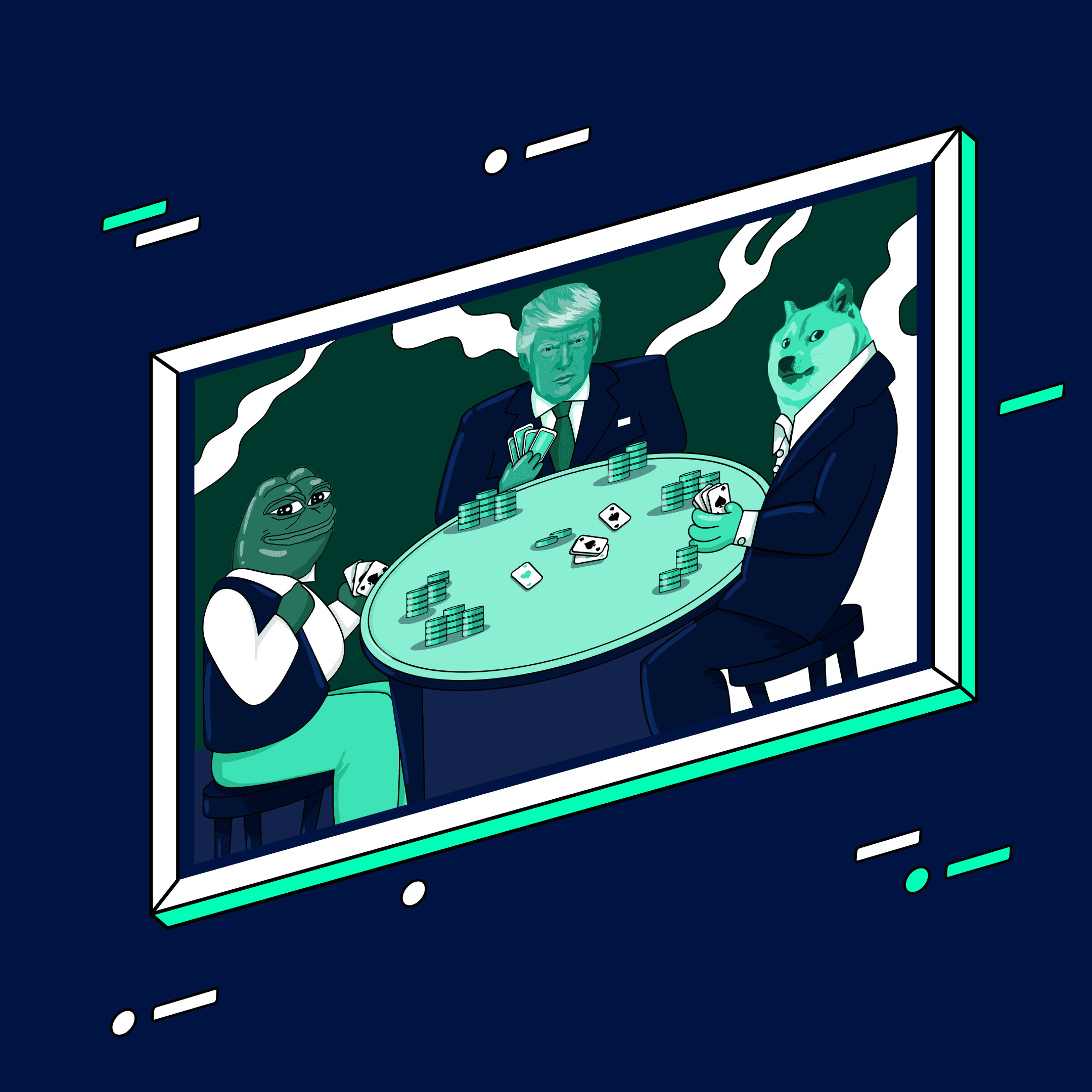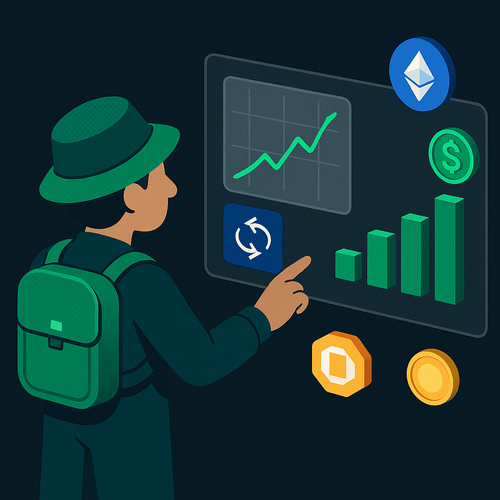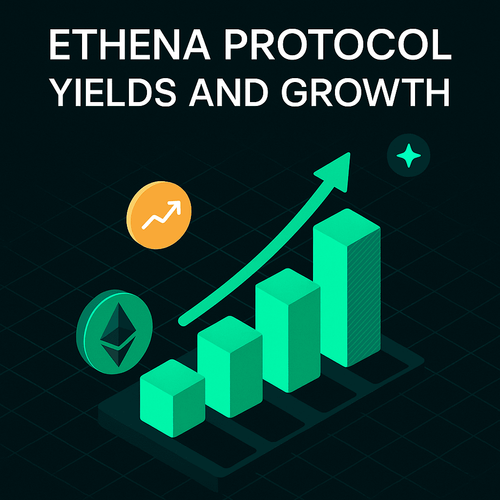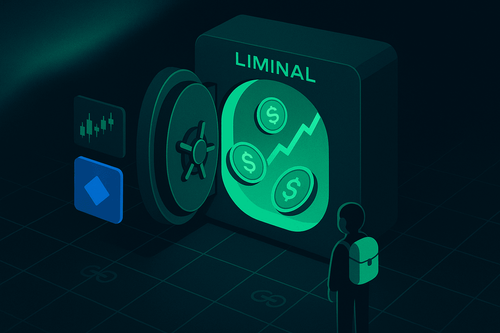Introduction
Frames is Farcaster’s new shiny feature. Frames turn casts (tweets) into interactive apps. So what is Farcaster?
Farcaster is a decentralized social protocol and Warpcast is their reference client. Frames is a new feature, built as an extension of the Open Graph Protocol; a content standard developed initially by Facebook. The Open Graph Protocol, which has somewhat been forgotten, is back and repurposed to bring in the new Farcaster Feature: Frames.
What we have in Frames is a new Web 3 primitive that Web 2 could never really power: an easy way to run app X while a user is still inside app Y, with little coordination between X and Y. The interoperable identity and transaction record of the blockchain, along with the seamless handling of money and digital ownership, makes it possible to have a real and universal graph of user actions across consumer apps, something even Facebook at the height of its popularity couldn’t manage. - Antonio Garcia Martinez
Farcaster started as a social experiment, and initially, the application closely resembled a clone of Twitter, with no additional features or functionalities. Since the Farcaster client became Warpcast, this opened up possibilities for other developers to build their clients on top of the Farcaster protocol.
Loom video on Frames https://www.loom.com/share/686624c0cc5f434f9a54e38d8e138bbe?sid=9e6c82ff-5a6b-42c6-8e5b-f2adfe1968ba
So why are Frames so important?
“For Web 3 to succeed it needs to do two things: Enable cool functionality unable through traditional Web 2, and make the user largely unaware that they’re even on the blockchain. With Frames, we’re finally doing both.” - Antonio Garcia Martinez
Frames is doing exactly that.
Frames essentially allow users to build small apps that run inside of casts. Users can embed an “iframe” into casts (tweets) and people can interact with them without leaving the app.
Traditionally in Web 2 services, users would have to click through an application’s landing page, fill in login details, and land on some confirmation page. With Frames and the integration of Web3, the user funnel of purchasing an item or being directed to another application becomes much more seamless. This is beneficial for both the users and developers, as developers can reach users in a frictionless manner, and users can also have a better experience with the application overall.
How does it work on the back end?
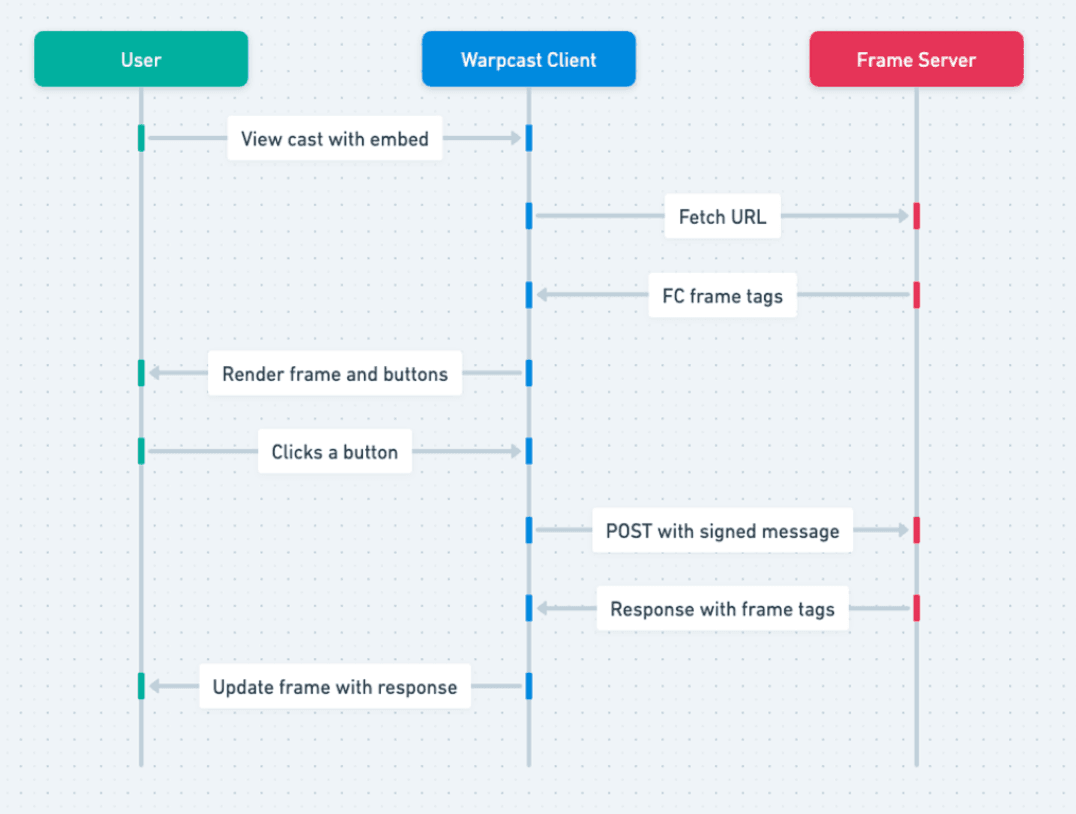
- User click on the “button” on the post e.g. ‘Mint NFT’, a POST request is sent with a signed payload to the URL provided in the Frame, and that URL can respond with another Frame
- The signed payload includes which button was pressed and a cryptographic hash that can be used to reliably identify that the user has submitted it
- This is important as bots are filtered out from interacting with the Frame
- This resembles CAPTCHAs which are used to manually detect whether a user is “real” or not
- With Frames, you can decode the signed payload and find the ID of the user who submitted the request
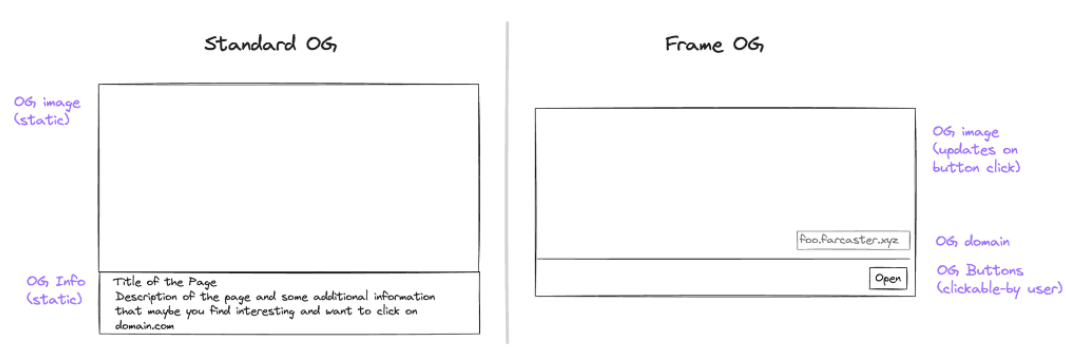
Use-cases of Frames:
- Poll Creator
- Viewing presentations or videos on Frames
- Frames will allow users to see more than just a preview of any said content.
- For instance, presentations, and any media content alike can be accessed directly from the web interface.
- Users can click and navigate the video or presentations
- Games
- Onframe Chess
- Fully featured chess game with Farcaster frames
- Netheria mini game
- Text-based game
- Creator will also send the first 10 winners a free Synthia NFT
- Onframe Chess
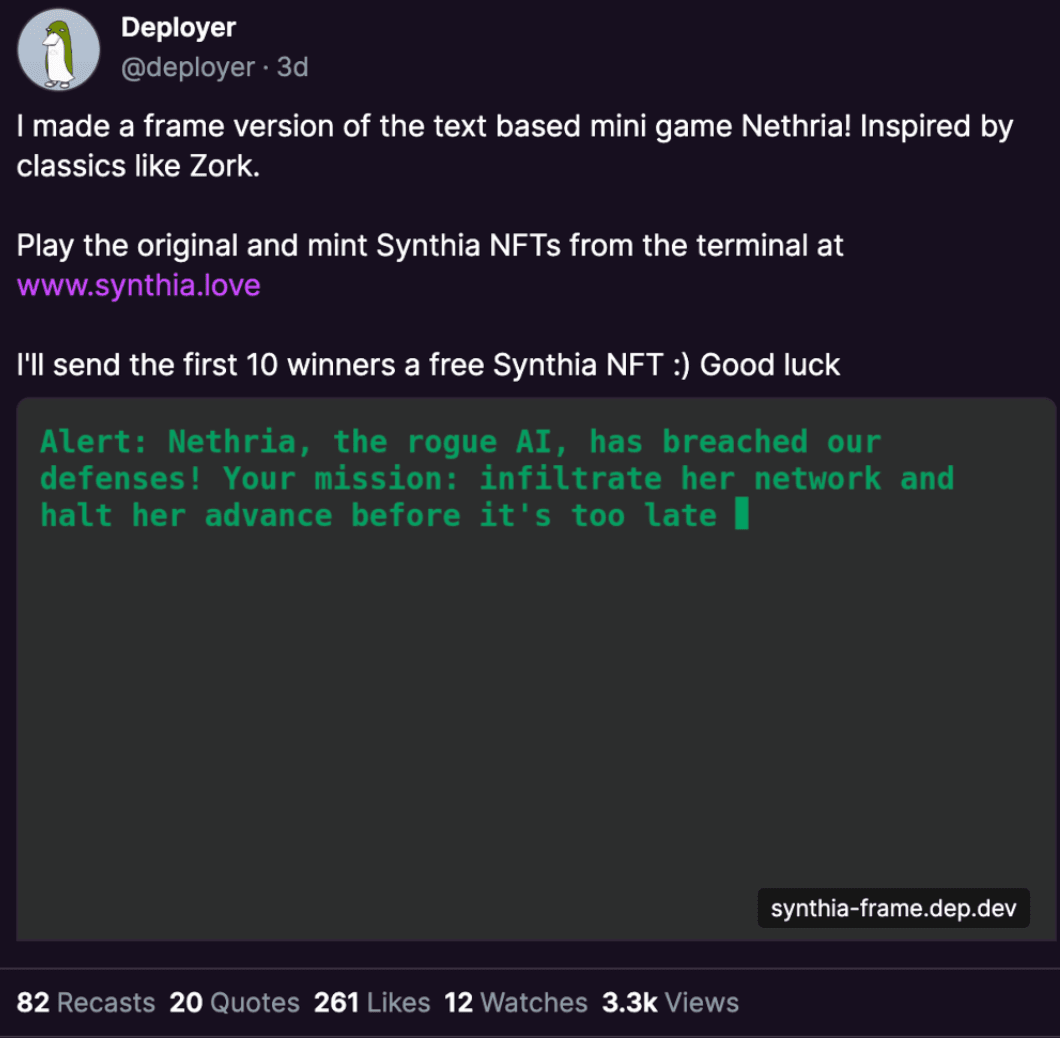
- Online Shopping/ Retail
- Girl Scout Cookies
- Place orders for Girl Scout cookies directly on the Frames and receive $crumbs as a token
- Girl Scout Cookies
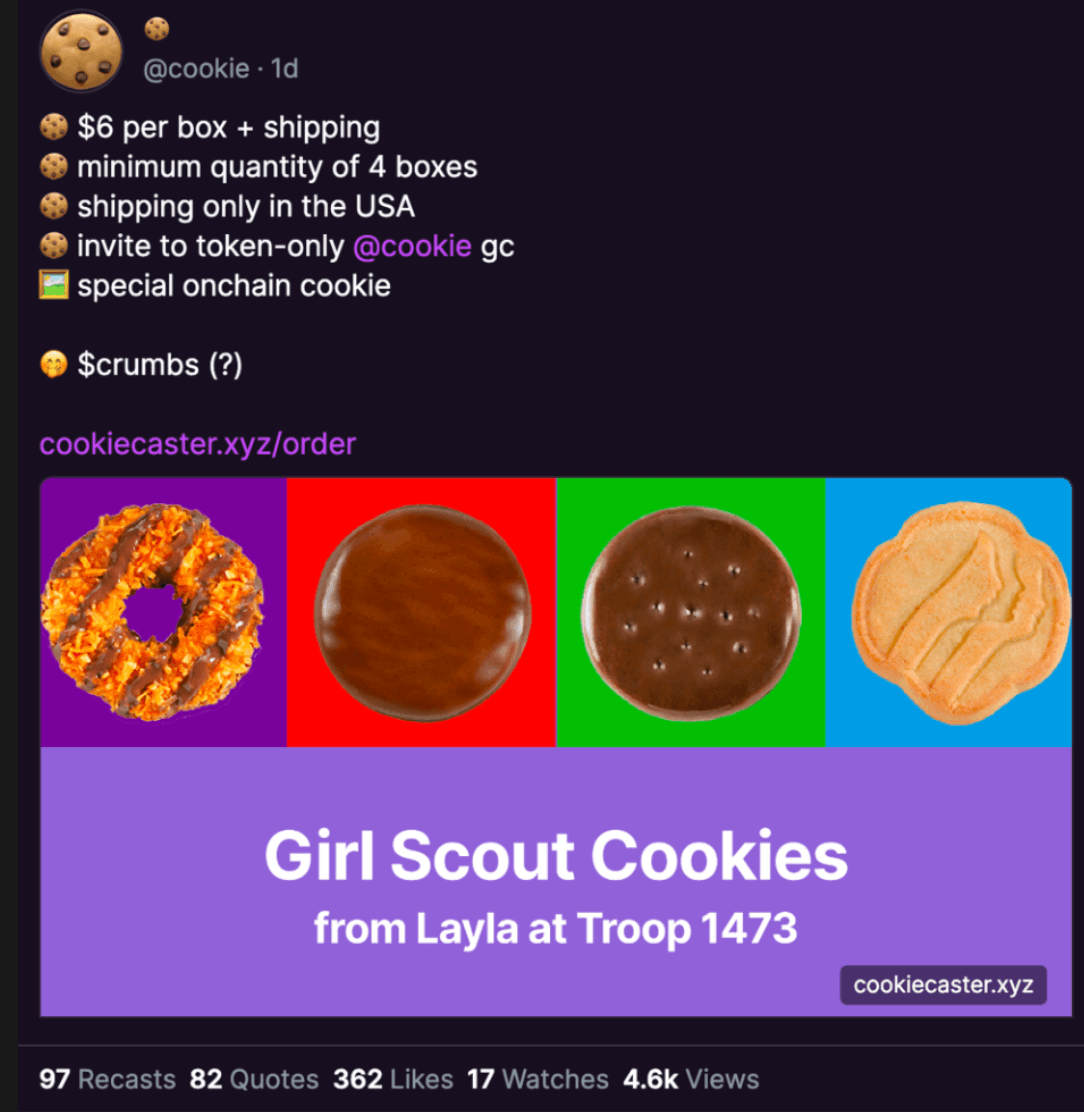
- NFT mints on Frames
- The first free mint on Farcaster followed a “recast first and mint” method
- The cool part? The NFTs will show up correctly on the marketplaces
- Other use cases for free minting on Farcaster would be having parameters like free mints for your followers, holders of X NFT collections, most active channels on Farcaster, etc.
- How it works is that devs would create the NFT contract and put up funds to cover the cost of each mint
- When the user mints the NFT through the ‘mint’ button in the Frame, the server finds the connected address for that user and mints the NFT with the developer’s wallet to the user’s address
- The transaction has happened but the user isn’t initiating the transaction and doesn’t pay gas fees as well
- What if we want users to start paying for it? Users can select a delegate for a smart contract or server to handle funds on their behalf, and users can create an account on this service and top up whenever they need to access funds. This would essentially be a “prepaid” balance for an account.
- The first free mint on Farcaster followed a “recast first and mint” method
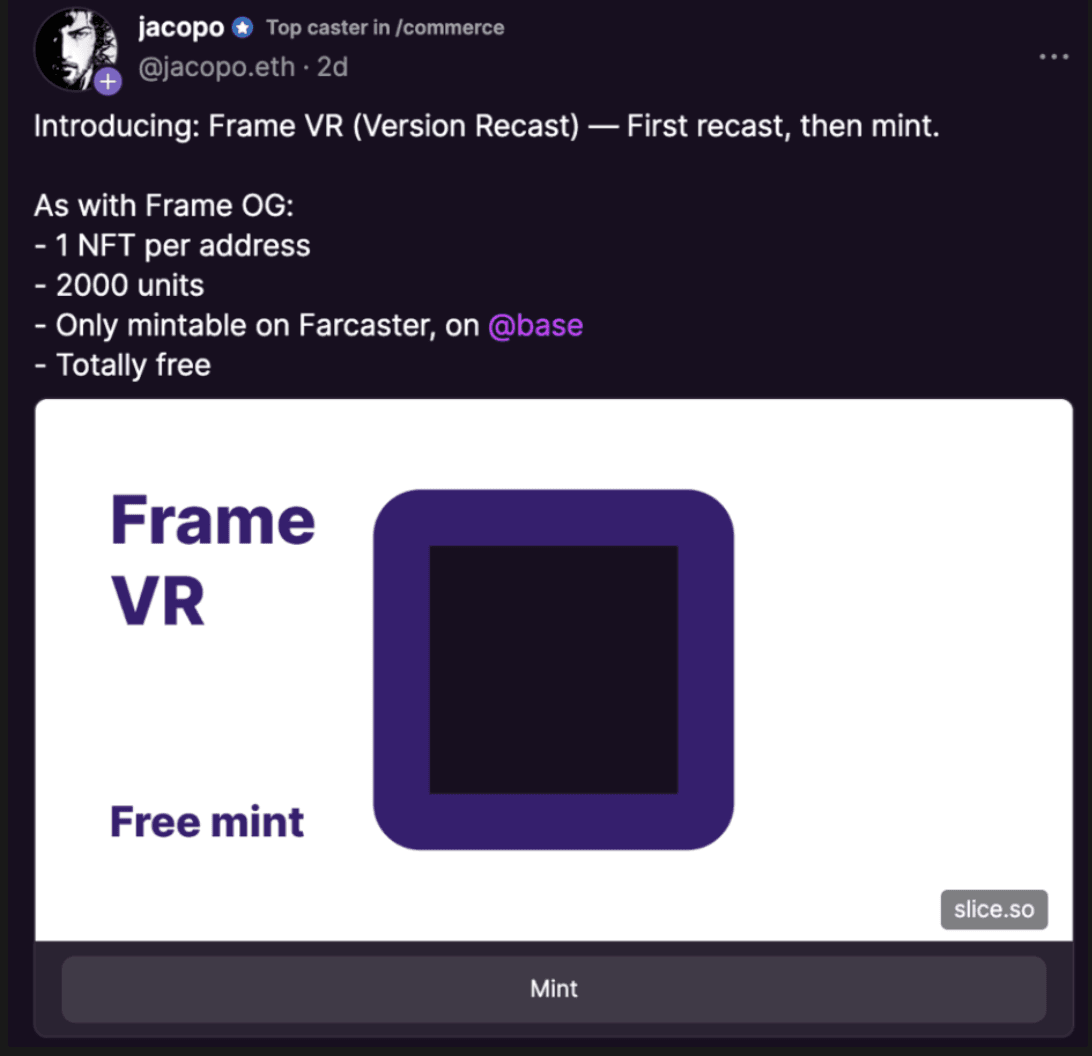
Other ideas:
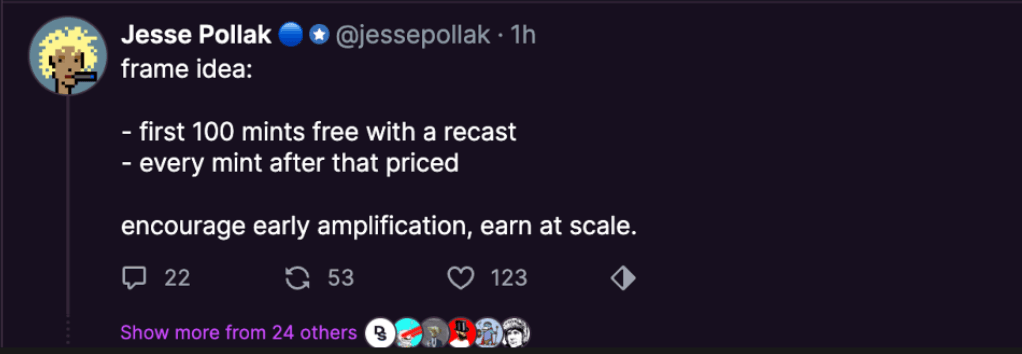
Frames: The 0-to-1 moment for Crypto UX
We are at the cusp of a 0-to-1 moment for crypto UX, and Frames have the potential to unlock bigger use cases that will leverage the composable, permissionless, and experimental nature of blockchains.
How to Get Involved?
- Set up an account and explore Warpcaster
- Try out Frames or launch a Frame of your own
- As a proxy coin for Farcaster and Base, $degen is a coin that was launched from the Farcaster team, not a governance token, that was airdropped to some Farcaster users. Degen is not a utility token and is just purely a speculative coin for Farcaster and Base.
- Get involved in the NFT mints on Farcaster, as there may be airdrops and other benefits as Farcaster grows and acquires more users over time
- Explore more frames here and be the first to know as projects and users launch their Frames
- Keep up to date on this shitcoin channel from Lawliette
- Look for trending followers here

